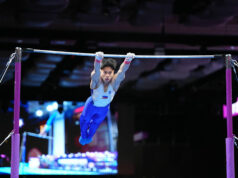Of all organized sports, tennis is argued to be among the easiest to plan for in transitioning to a post-COVID-19 setup. It presents few challenges, at least on paper. It’s a non-contact endeavor, with players, line judges, ball boys, and the chair umpire theoretically able to practice social distancing throughout any given set-to. Then again, it’s one thing to think about the match itself, and quite another to consider both what should come before and what happens after. Relevancy requires that it be part of a tournament, thus presupposing the involvement of hundreds more, at minimum, even absent spectators — from other competitors to coaches to medical teams to organizers to service professionals.
In other words, preparation won’t be anywhere close to the cakewalk it initially seems. Travel is required of all, coming from different countries whose governments have varying measure in place. And even granting mobility, there is the not insignificant hurdle of trying to house those involved in one place big enough to keep them isolated and apart from each other for the duration of a fortnight. It takes no genius to start a discussion while basking in the ideal: a remote broadcast, with fans enjoying tennis at its finest while in the comfort of homes. Safety, though, needs to be all encompassing, and the very nature of the enemy compromises it at the outset. The coronavirus disease 2019 can affect, and be transmitted by, the asymptomatic, thus putting into question the viability of any form of testing that should supposedly guarantee clean bills of health.
Which is why the best of the best have been left with no choice but to feed their need for competition through other ways. Even as they rely on more informed quarters to come up with solutions in transitioning to the new normal, they bank on themselves, and one another, to make the most of the interim. Last week, living legend Roger Federer issued a #tennisathome challenge that compelled those who took him up on it to make a string of volleys against a wall. Naturally, he did his in style, donning an all-white ensemble that included a fedora hat. And, naturally, myriad other players and celebrities — and fans, of course — followed suit.
Some were serious. Coco Gauff was a picture of intensity in the short video she posted on Twitter, and she noted “it took me way too many times to get this right.” Some were funny. Novak Djokovic asked Federer if he was “good enough” while doing the challenge. The response: “You’ve beaten me with that volley more than a few times, I don’t think you need any tips.” Some were both. Clearly joking, Serena Williams said in her Instagram post, entitled “4 days later…,” that she had been at it for a while, with her count already “at six billion, 743 million, or trillion;” yet, she was clearly invested in doing well, even going totally silent for the last third of her one-and-a-half-minute post to concentrate on her volleying.
Soon enough, Andy Murray tweaked the idea and turned it into a doubles affair. He and wife Kim did a 100 volleys back and forth, and then called on everybody else to do the same. Djokovic and wife Jelena did, a couple of times almost flubbing the effort but succeeding all the same. Brothers Bob and Mike Bryan saw fit to answer the call with cellphones and a ping-pong ball, punctuated by a between-the-legs final volley. Unfortunately, Federer has yet to commit, pointing out that wife Mirka “totally would but is social-media shy.”
Beyond parlor games, the sport is following in the footsteps of NASCAR and the National Basketball Association by scheduling the Mutua Madrid Open Virtua Pro later this month. Yes, marquee names will be picking up Sony PlayStation 4 controllers to compete in a tournament via Tennis World Tour. Such notables as Rafael Nadal, Gael Monfils, John Isner, and Murray will be part of a 16-strong contingent doing battle at the digitally rendered Manolo Santana Stadium. On the distaff side, the likes of Angelique Kerber, Madison Keys, Victoria Azarenka, and Eugenie Bouchard have signed up.
As with other competitions, gamesmanship is key. Whether or not there will be trash talking remains to be seen. What’s evident, however, is the commitment to stay active while safe — and to help when possible. At stake is a purse of €150,000 in both draws, with the victors slated to decide how to divvy it up among members of the Association of Tennis Professionals and Women’s Tennis Association Tours affected by the suspension of schedule. Clearly, everybody’s trying to cope, fueled by optimism for a better tomorrow.
Anthony L. Cuaycong has been writing Courtside since BusinessWorld introduced a Sports section in 1994.



